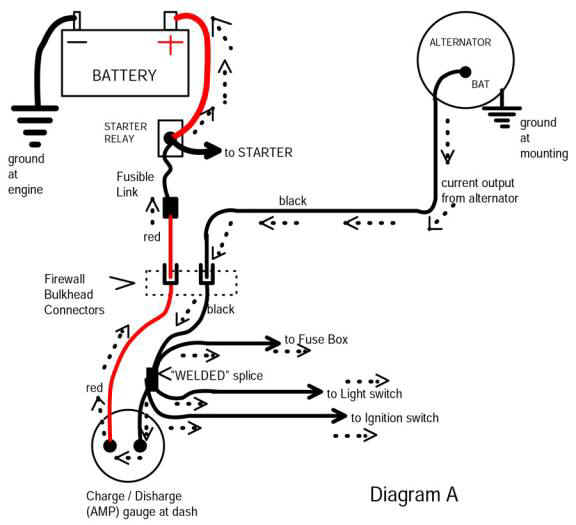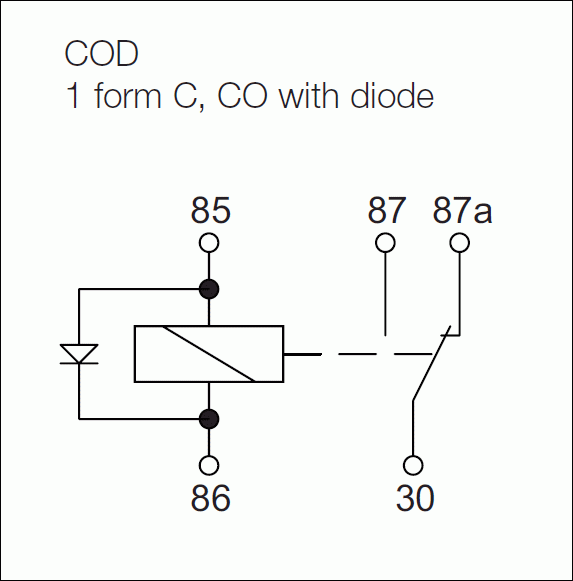So on my column the original wire that burnt off was the large red wire, which when going thru the fire wall I believe was the fusable link wire also. If I remember correctly that wire goes to the starter relay. So if that is already run thru a relay why is there such a load on the column connector causing it to melt and fail at the connector?
The big no 12 Red feeding battery voltage into the switch originally was hooked to a welded splice under the dash in the black ammeter wire. Has the wiring been chopped up?
Look over this diagram at MAD. It is a simplified overview of how most of these cars get "main power"
http://www.madelectrical.com/electricaltech/amp-gauges.shtml
Follow along. Start at the starter relay. Power comes from the starter relay "big stud," through the fuse link, through the bulkhead, (the red wire) and to the ammeter
Through the ammeter, we are now in the under--dash harness in the black ammeter wire. The wire goes a few inches, and gets to the factory "welded splice". This is taped up in the harness under the dash. From that splice, a BIG RED wire takes off and goes to ..............the ignition switch. In the MAD diagram below, that is the bottom right hand wire coming off the splice

Now, follow the diagrams from the 71 shop manual
In the top drawing.........the ammeter, we have a black and a red wire. The red wire is power coming IN from the bulkhead as in the MAD diagram, through the ammeter, and out on the BLACK wire.
Second diagram, is the under-dash welded splice. Notice in the ammeter diagram that the black wire on the ammeter is wire no R6A-12BK. This means a no 12 BLACK wire. R6A is an arbitrary circuit number.
Now look at the welded splice. Notice that there is a wire no R6A-12BK coming in from the middle right. That is the wire from the ammeter.
Now go to the ignition switch, 5th wire from the top. Notice at the left that it says J1-12R battery. Now look back at the splice. Top left wire is J1-12R. So that is power going OUT of the splice TO the ignition switch.

















